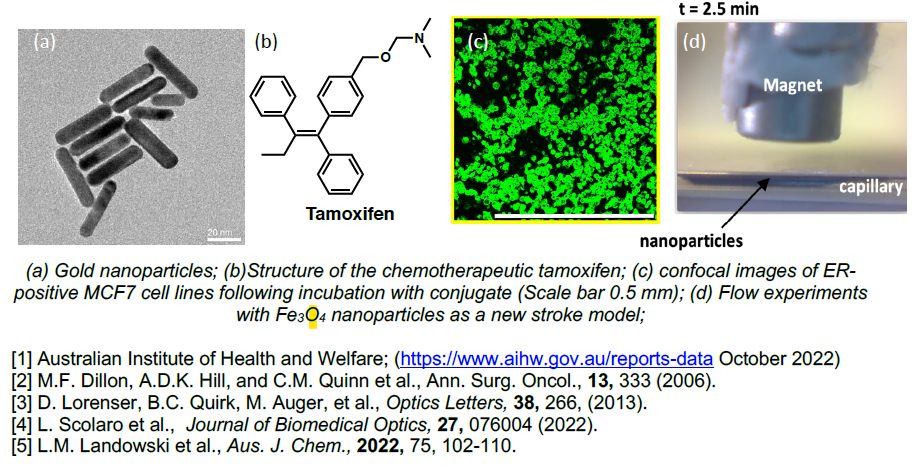School Seminar: Dr Rebecca Fuller; University of Tasmania
Wednesday, 9 November 11:00am – 12:00pm
This seminar will be delivered in Chemistry Lecture Theatre School of Chemistry4 and Online Zoom Please email chemistry.researchsupport@sydney.edu.au for zoom link and password.
Speaker: Dr Rebecca Fuller; University of Tasmania
Host: Dr Max Roemer
Title: Developing small molecules and nanoparticles for the assessment of tumour margins and stroke detection
Abstract: Breast cancer is the most common cancer in women, and the leading cause of death in women aged 25-64 years old.[1] One of the central treatments for breast cancer is the surgical excision of malignant tissue. Accurate identification of the extent of the malignant tissue is difficult, during surgery, and up to 34 % of patients undergoing breast-conserving surgery will have involved margins or inadequate clearance (<5 mm) [2] resulting in an increased risk of local recurrence and often requiring further surgery.
A highly miniaturised imaging needle probe which has the potential to visualise diseased cells has been developed as a solution to this problem.[3] While the probe showed promise in early preliminary clinical assessments, it was found unable to differentiate some malignant tissue from normal healthy tissue, making it clinical unviable. To bring this new tool to a clinical setting, a way to mark the tumour has been developed. This talk will share the unexpected journey in the development of a suitable contrast agent to improve the probe differentiation. Our original work focused on the use of nanoparticles, to provide direct contrast with the optical coherence tomography used. We subsequently turned to developing an agent based on the chemotherapeutic tamoxifen. The drug could be successful transformed into a targeted contrast agent useful for generating contrast with the needle probe.[4]
The translation of nanoparticles to applications is often hindered by the reliability of synthetic methodology to produce uniform larger particle (diameter >20 nm) systems. Recently we have begun work on an iron oxide nanoparticle model for stroke detection. We have focused on improving reproducibility and understanding the impact of particle size on how they agglomerate in aqueous media undergoing flow through a capillary tube have been studied as the basis for a new stroke model.[5]


